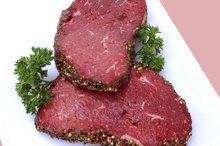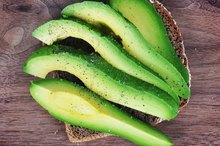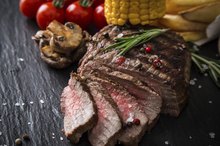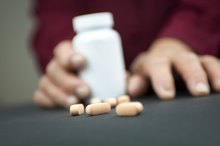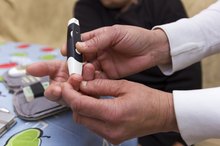Sources of Ferritin
Ferritin is the form of iron that is stored in the body's tissues. When insufficient iron is consumed, your body draws from these ferritin stores. If the deficiency continues, ferritin will become depleted and the blood plasma levels of iron will decrease. This will result in iron-deficiency anemia, a condition in which the red blood cells become inefficient at carrying oxygen throughout the body. Eating foods high in iron will boost the amount that your body stores in the form of ferritin.
Meat and Seafood
The Recommended Dietary Allowance of iron is 8 mg per day for adult men and 18 mg per day for adult women. There are two forms of dietary iron, heme and non-heme. The heme type is found only in animal products and is used more efficiently by the body. Red meat, liver, oysters, poultry and fish are rich sources of heme iron that will boost ferritin levels.
Plant Sources
How Long Does Iron Stay in Your System?
Learn More
Non-heme iron is found in vegetarian sources and iron-fortified foods. Good sources of non-heme iron include soybeans, lentils, lima beans, kidney beans, navy beans, peas, spinach and molasses. Fortified breakfast cereals and oatmeal are also high in non-heme iron.
Supplements
If a blood test reveals low ferritin levels, your doctor may prescribe supplemental iron to prevent iron-deficiency anemia. A typical recommended dose is 50 to 60 mg of oral elemental iron twice daily but you should follow the instructions of your doctor to receive the right amount of iron for you. Some individuals experience vomiting, constipation and nausea as side effects of iron supplementation. Taking the supplement with food or dividing it into two smaller doses may alleviate these symptoms. Discuss these options with your doctor before beginning any new supplement.
Related Articles
References
Writer Bio
Amy Liddell has been writing on health and medicine since 2004. She is also a biomedical scientist and studies human cancer. Her articles have appeared in scientific journals, medical textbooks and on health-related consumer websites. Liddell holds a Doctor of Philosophy in biological and biomedical sciences from Harvard University.
